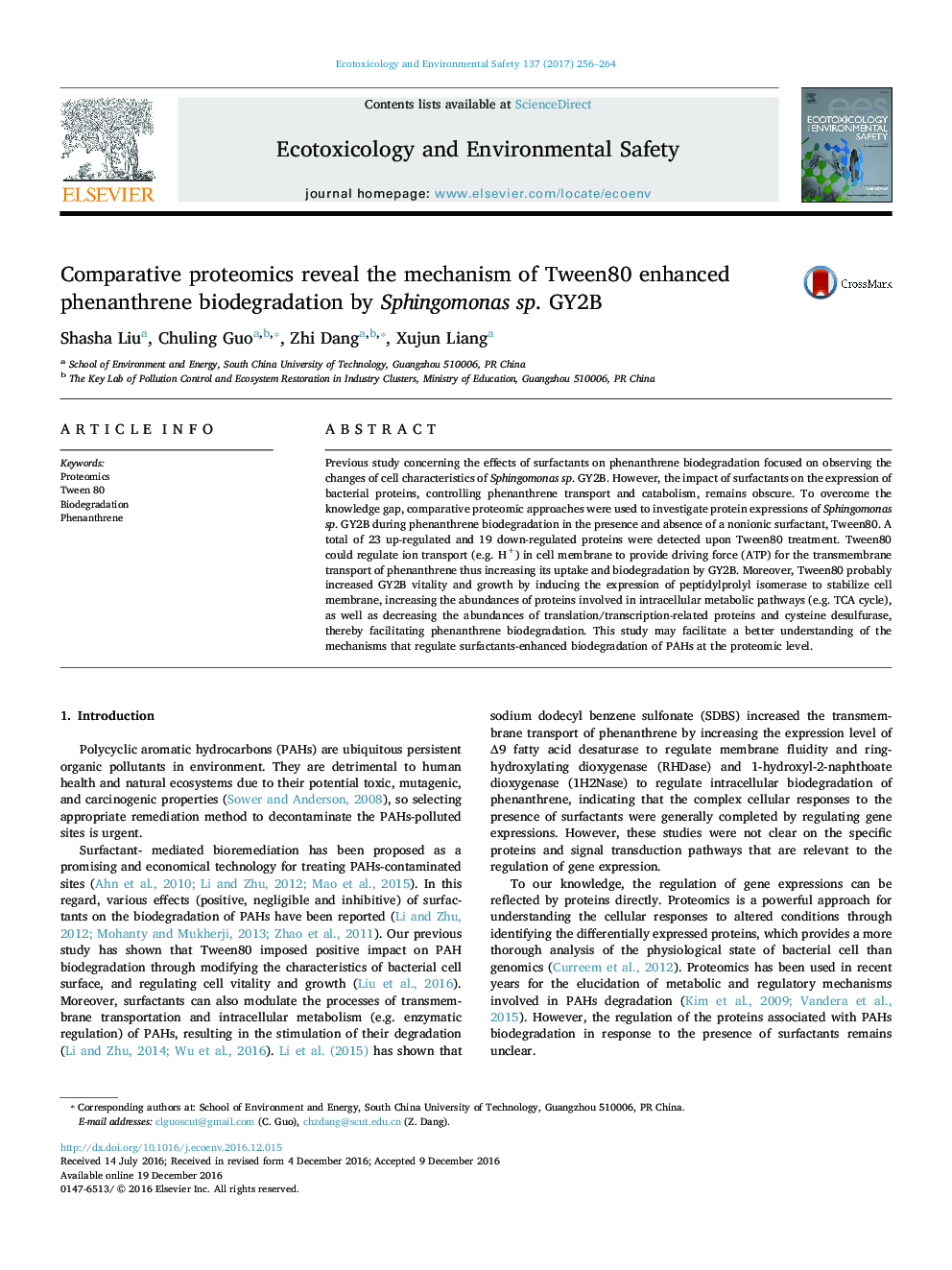| Article ID | Journal | Published Year | Pages | File Type |
|---|---|---|---|---|
| 5748068 | Ecotoxicology and Environmental Safety | 2017 | 9 Pages |
â¢Transmembrane transport of phenanthrene was stimulated by Tween80.â¢Tween80 induced the expression of peptidylprolyl isomerase to stabilize cell membrane.â¢Tween80 regulated abundances of proteins involved in intracellular metabolic pathways.â¢Multiple cellular mechanisms contributed to the increased phenanthrene biodegradation.
Previous study concerning the effects of surfactants on phenanthrene biodegradation focused on observing the changes of cell characteristics of Sphingomonas sp. GY2B. However, the impact of surfactants on the expression of bacterial proteins, controlling phenanthrene transport and catabolism, remains obscure. To overcome the knowledge gap, comparative proteomic approaches were used to investigate protein expressions of Sphingomonas sp. GY2B during phenanthrene biodegradation in the presence and absence of a nonionic surfactant, Tween80. A total of 23 up-regulated and 19 down-regulated proteins were detected upon Tween80 treatment. Tween80 could regulate ion transport (e.g. H+) in cell membrane to provide driving force (ATP) for the transmembrane transport of phenanthrene thus increasing its uptake and biodegradation by GY2B. Moreover, Tween80 probably increased GY2B vitality and growth by inducing the expression of peptidylprolyl isomerase to stabilize cell membrane, increasing the abundances of proteins involved in intracellular metabolic pathways (e.g. TCA cycle), as well as decreasing the abundances of translation/transcription-related proteins and cysteine desulfurase, thereby facilitating phenanthrene biodegradation. This study may facilitate a better understanding of the mechanisms that regulate surfactants-enhanced biodegradation of PAHs at the proteomic level.
